Is it helpful to hear how we, who do this for our living, describe the various techniques that we impose upon our glass and for you to learn the words we use to name our most significant operations?
I sense it is. — Rather than drilling deep at the first opportunity, and despite the newcomer’s eagerness immediately to trace and shade, I sense it’s better, from a high point to survey the wide terrain, and only later on drill down.
That way I’ll also have a chance to persuade the newcomer that the place he wants to start from is not the place at which he should begin.
This, I promise you, will prevent a huge quantity of tears.
It will also allow much faster progress overall. Starting from a different place entirely, the newcomer will have time to become familiar with his tools and brushes, and to forge an understanding of his vexatious chosen medium — glass paint mixed with gum Arabic and water:
I write “vexatious” but that is imprecise of me. If I shout at a stranger in the street that HE MUST BUY ME A COFFEE, what likelihood is there that he’ll comply?
Yet when I get to know him — his character, his moods — and ask a favour in a tone of voice that suits his temperament, you know already that he’ll oblige me in an instant:
“Gladly.”
And the
frothed Soya decaf caramel spiced FrappuccinoAmericano will soon be mine.
So it is with glass paint; the newcomer just wants time and practice in order to accept this truth.
Then, having started in a place he likely didn’t want to, he’ll learn how to ask his brushes, tools and paint to do his bidding and how thereby to get his way with them.
I anyway have considerable delights in store to curb his haste. Indeed, when I am done, the newcomer will cry out to linger in that place which at first he cursed to start from. Besides, with a tiring day or two of grinding practice, I would have him helping us restore those ancient, ruined windows we talk about elsewhere in these letters. If not this …
Then surely this:
Under my instruction, even a newcomer’s labour would be a credit to the project. I am nothing if not devious: the studio’s work is paramount — not, however, because it is the studio’s work but because it’s work, which always must be excellent, regardless of the cost to happiness or self-expression.
I am no longer puzzled that we do not have employees.
The survey
Bare glass
Here, for comparison’s sake with the subsequent examples, is the glass we often use when teaching. It’s a yellow tint:
Yellow or green tints are our preference when teaching. They are gentle on the eye, as we suggested earlier:
The undercoat
A light-coloured wash of paint across the whole surface of the glass, applied with the hake brush and smoothed as needed by the blender, we call the undercoat:
(For brushes, see here.)
Highlights
Glass paint isn’t permanent until it’s fired. Until that point, with a stick, for instance, you can remove the undercoat:
It’s my conviction that the paint which the glass painter removes is usually as significant as the paint which he applies:
Softened highlights
Intriguingly, though rarely discussed in treatises on glass painting, no sooner has the glass painter cut a sharp highlight with a stick than he can blur or soften it with his finger:
The effect can be extraordinary:
I choose not to resist a second example:
And there is not an earthly power which could stop me suggesting that you should watch this demonstration:
The self-congratulating phrase, “painting with light”, has always sickened me. (See, for example, Stained Glass; Lee, Seddon and Stephens; Spring Books; 1989; page 19 — ugh!)
But something tells me that “fingering the darkness” just won’t catch on, despite its greater claim to truth.
Flooding
This is the darkest paint of all. It obscures the light entirely:
We call it “flooding” because of how the process starts: the dark runny paint just pours off the pointed tracing brush.
Flooding is a simple, almost child-like technique (like “colouring in” with crayons), and, once you start to look, you’ll see it everywhere — in lettering, for example:
Tracing
The primary meaning is when you use light-coloured paint to copy from a design which is sandwiched between your glass and the illuminated light box:
The typical result is thin and light-coloured lines like these:
Strengthening
Once the design has been scrupulously copied from the design beneath, the glass painter is free to put it on one side and go over some or all of the faint, thin lines a second time, darkening them or adjusting their position slightly:
Tracing was slavish (else what is the point of the design?); strengthening involves choice. How dark to make the line? How thick? Whether to let it stand where it is, or nudge it sideways? All these decisions arise now because it’s only at this point that the glass painter can more clearly see the effect of earlier paint:
Emboldening
Sometimes, and for dramatic ends, the glass painter exaggerates a line so much, it is no longer “strengthening”:
Emboldening is nothing if not spirited and brash:
Thus, to start with:
Undercoat
Highlights
Softened highlights
Flooding
Tracing
Strengthening, and
Emboldening.
Seven processes, all of which have variations.
Undercoats for instance can be lighter or darker, smooth or textured in many different ways, even-toned across the whole piece or shadowy in parts.
Trace-lines can be lighter or darker, thinner or thicker etc.
And so forth.
The distinction between the processes isn’t always as clear-cut as distinct words might sometimes suggest. For example, sometimes it’s clear where the difference lies between strengthening, emboldening and flooding:
Sometimes, it isn’t:
Note, not just the fine-spirited inscription, but also our English summer. It’s little wonder we’re so oppressed and brow-beaten. (However, centuries ago, when we were brave and hadn’t lost our fighting spirit, the foul weather also prompted us to sail the seven seas.)
And, while the newcomer begins with brushes, it must always be remembered there are many different ways of applying paint to glass — in a spray, for instance, or with stencils like this exquisite one, sent to us by a craftsman and colleague in Michigan:
Similarly, there are many different ways of removing paint, ranging from the indiscriminate …
… to the purposeful such as with the simple cardboard stencils on the left, below, which you can cut yourself to decorate an undercoat:
In short, “undercoat”, “tracing”, “flooding” etc. don’t refer to ultimate categories of being; they are broad terms which we jobbing glass painters use to talk with one another and organise our daily work.
And, because they are successful in that role, I promise you these words will by that same token help organise the newcomer’s mind to help him learn the craft efficiently:
Undercoat
Highlights
Softened highlights
Flooding
Tracing
Strengthening, and
Emboldening.
Yet again my letter has grown longer than I imagined it would. Yet again I’ve identified a preliminary matter — this time a survey — which postponed the topic I had last time vowed to introduce.
I will do better next time. Next time the fireworks will begin, or rather the stage effects, whose illusionary power we shall reveal:
The undercoat: master this technique, and you will already have achieved so much.



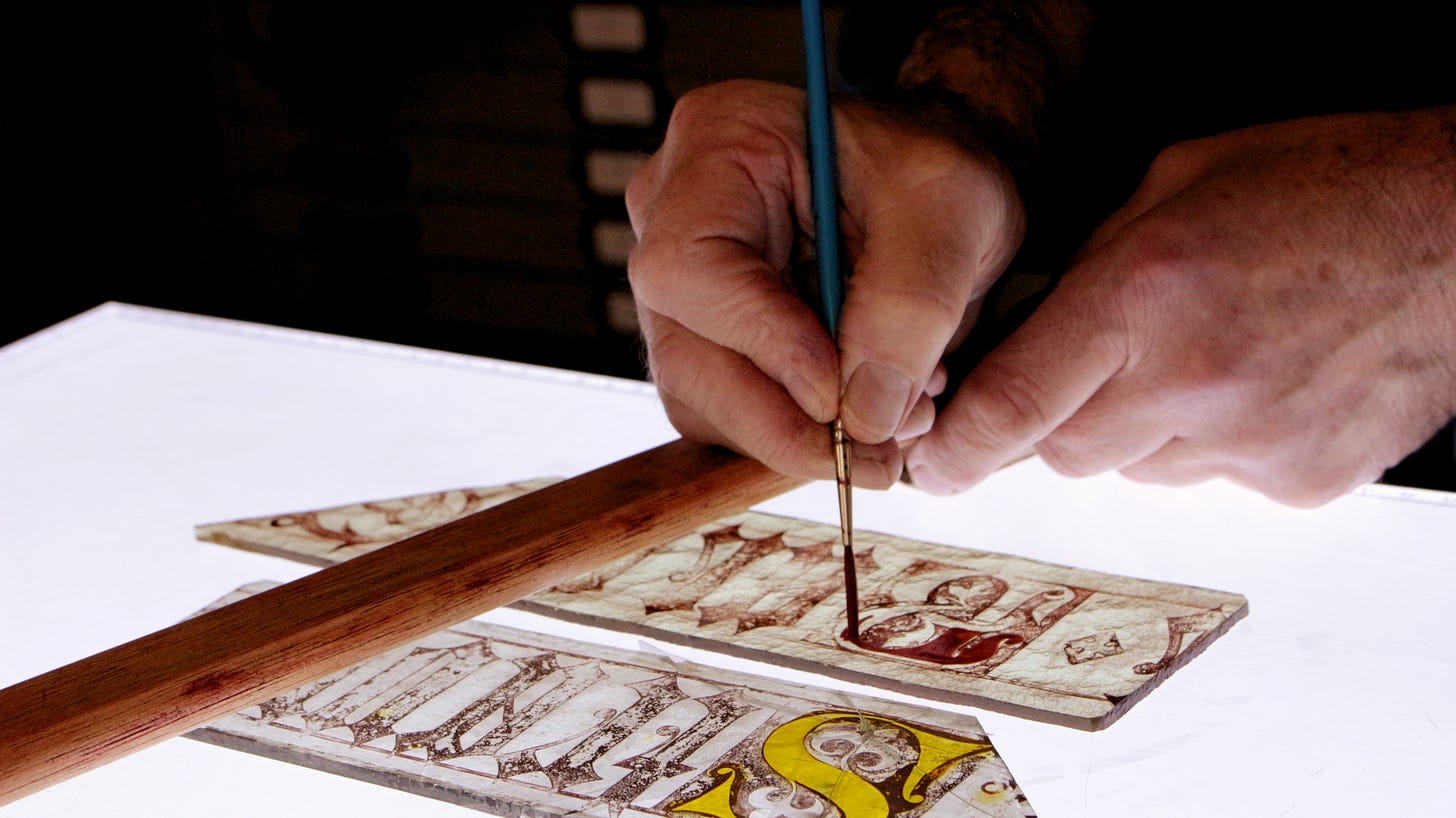

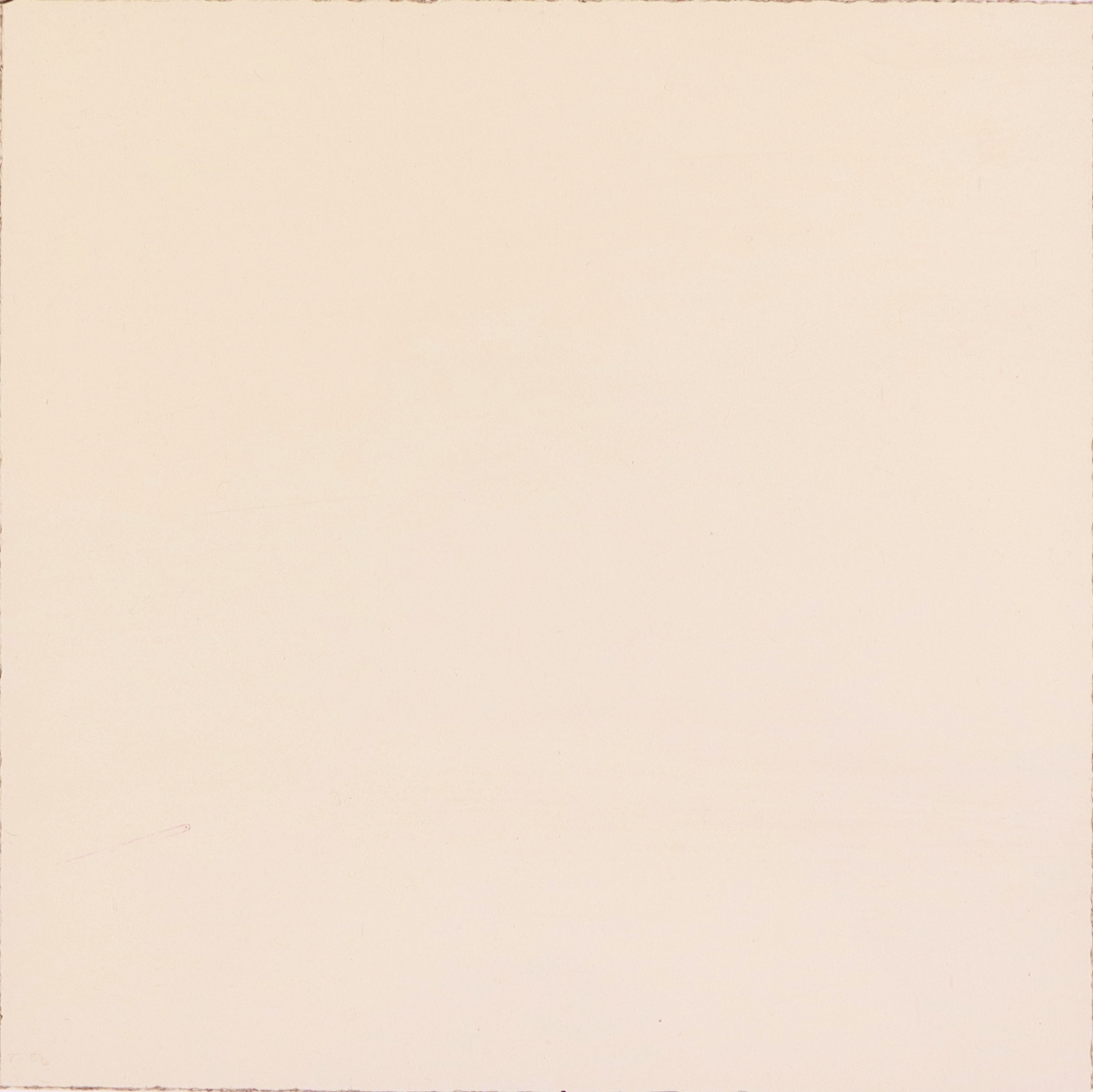

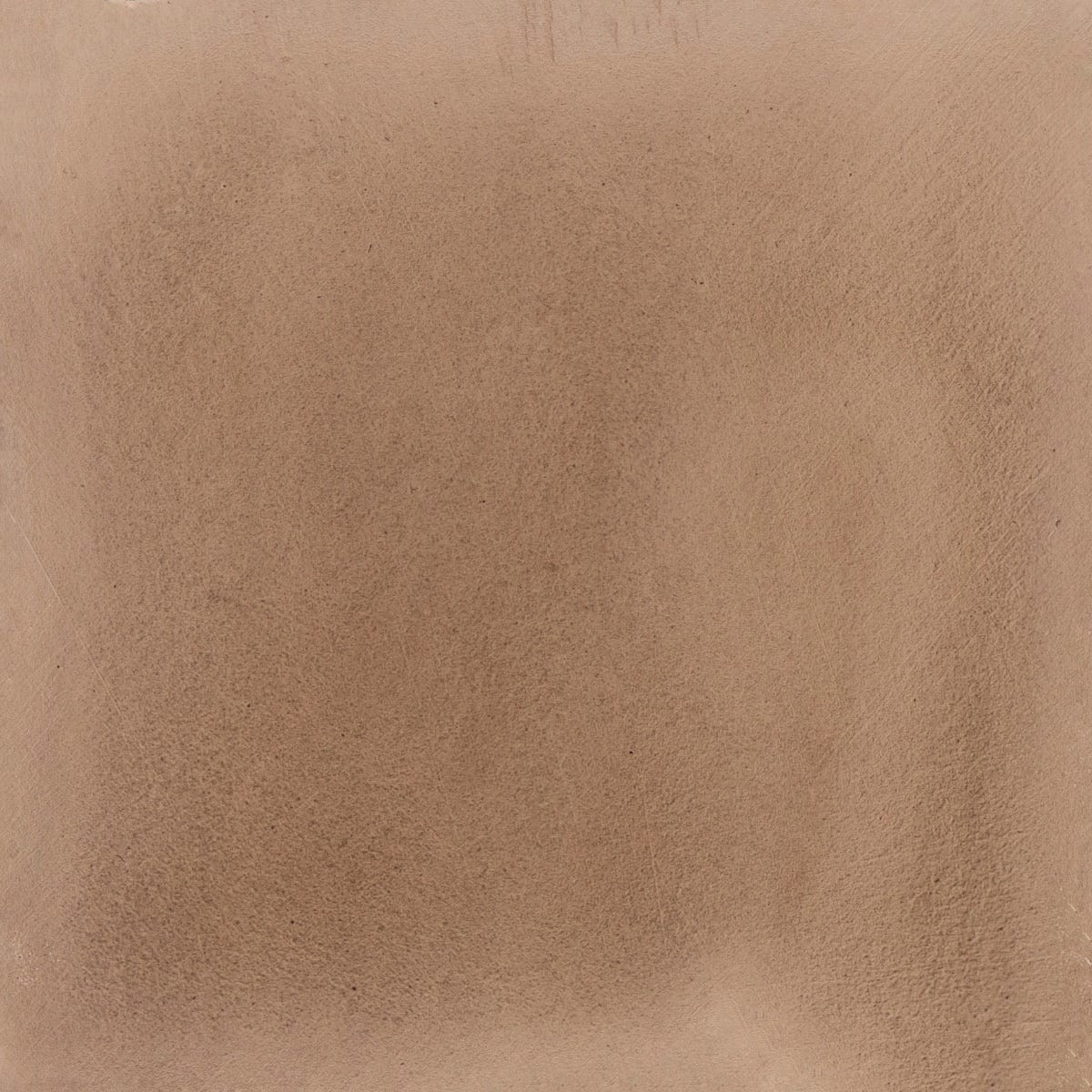
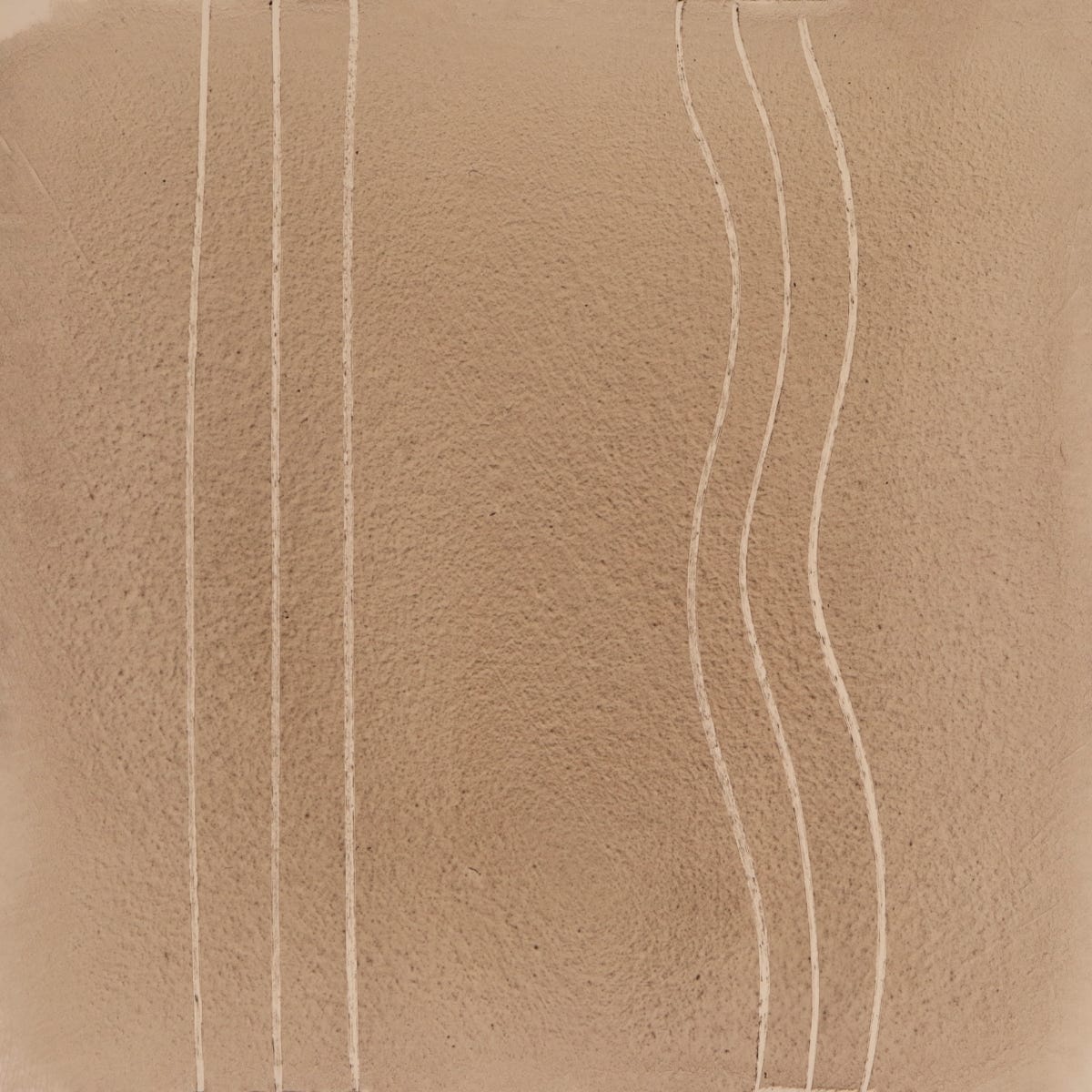
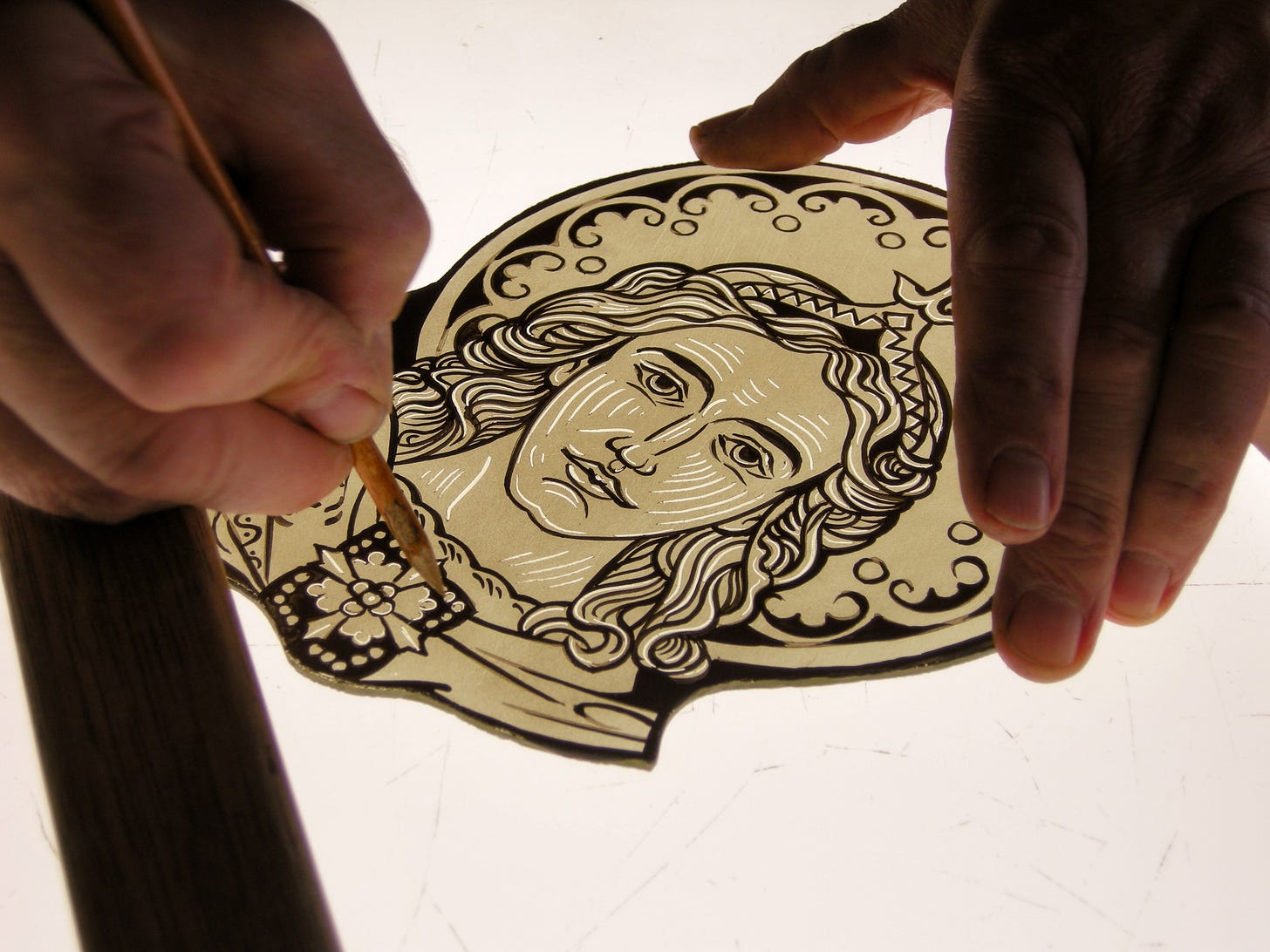
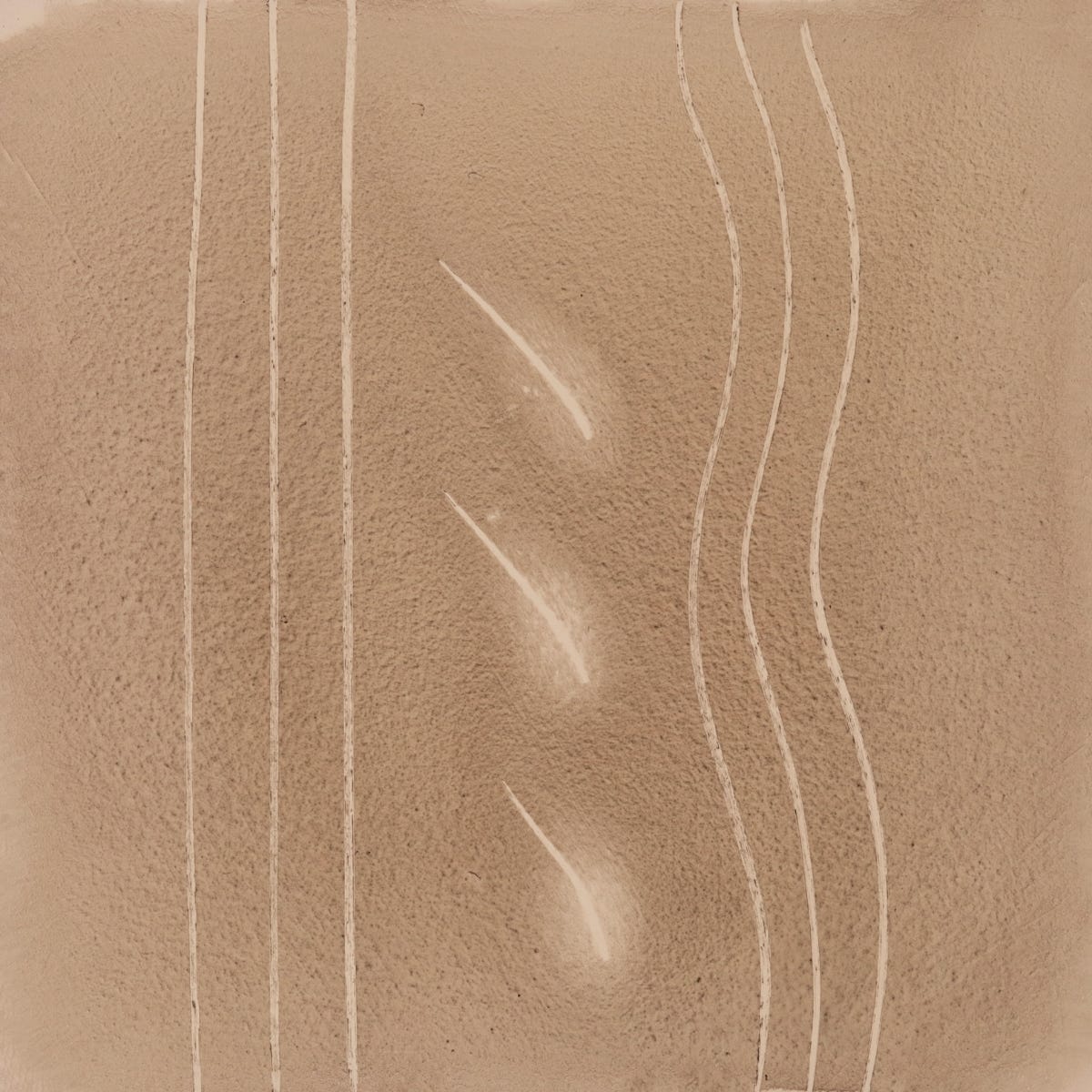
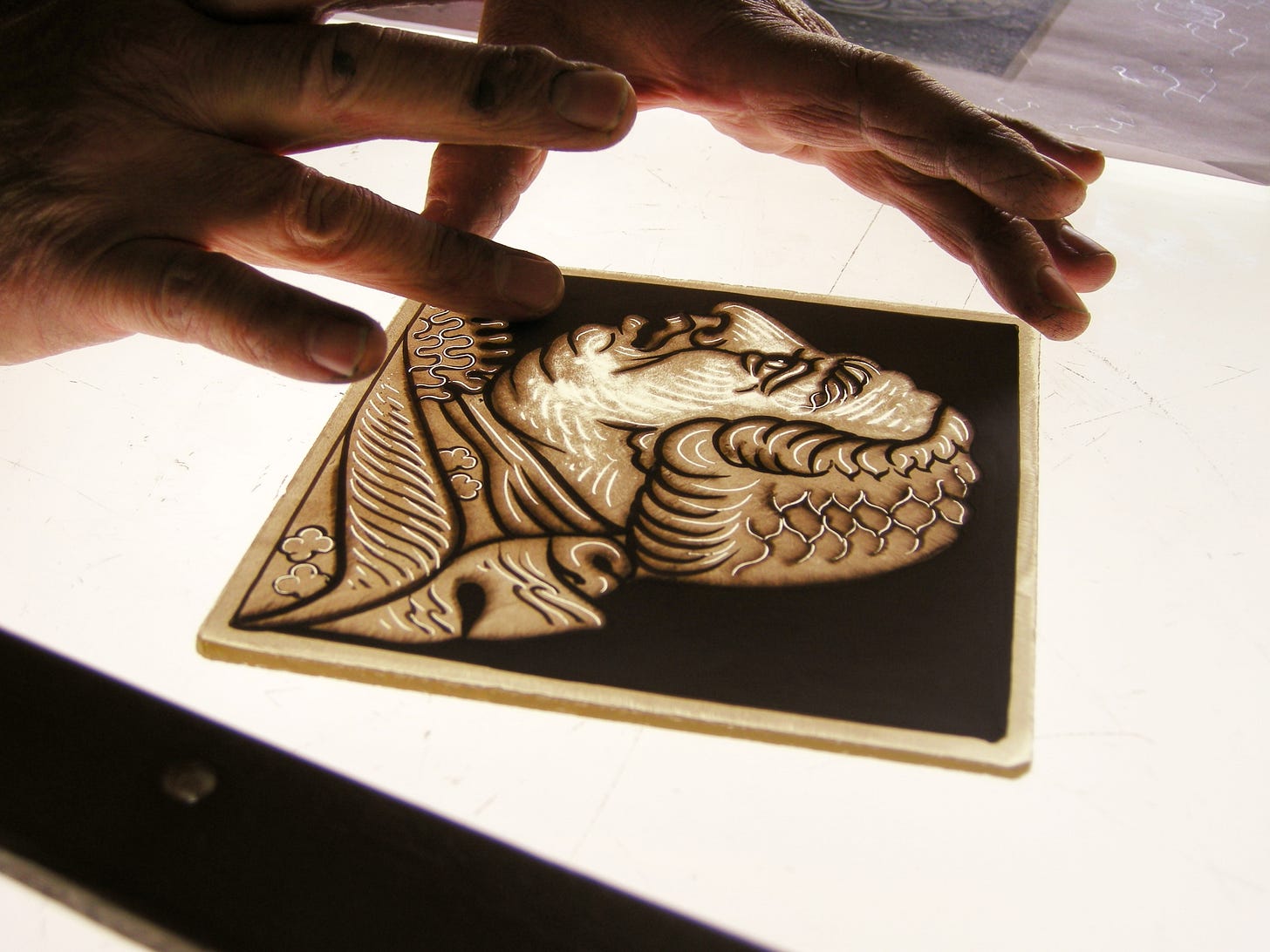
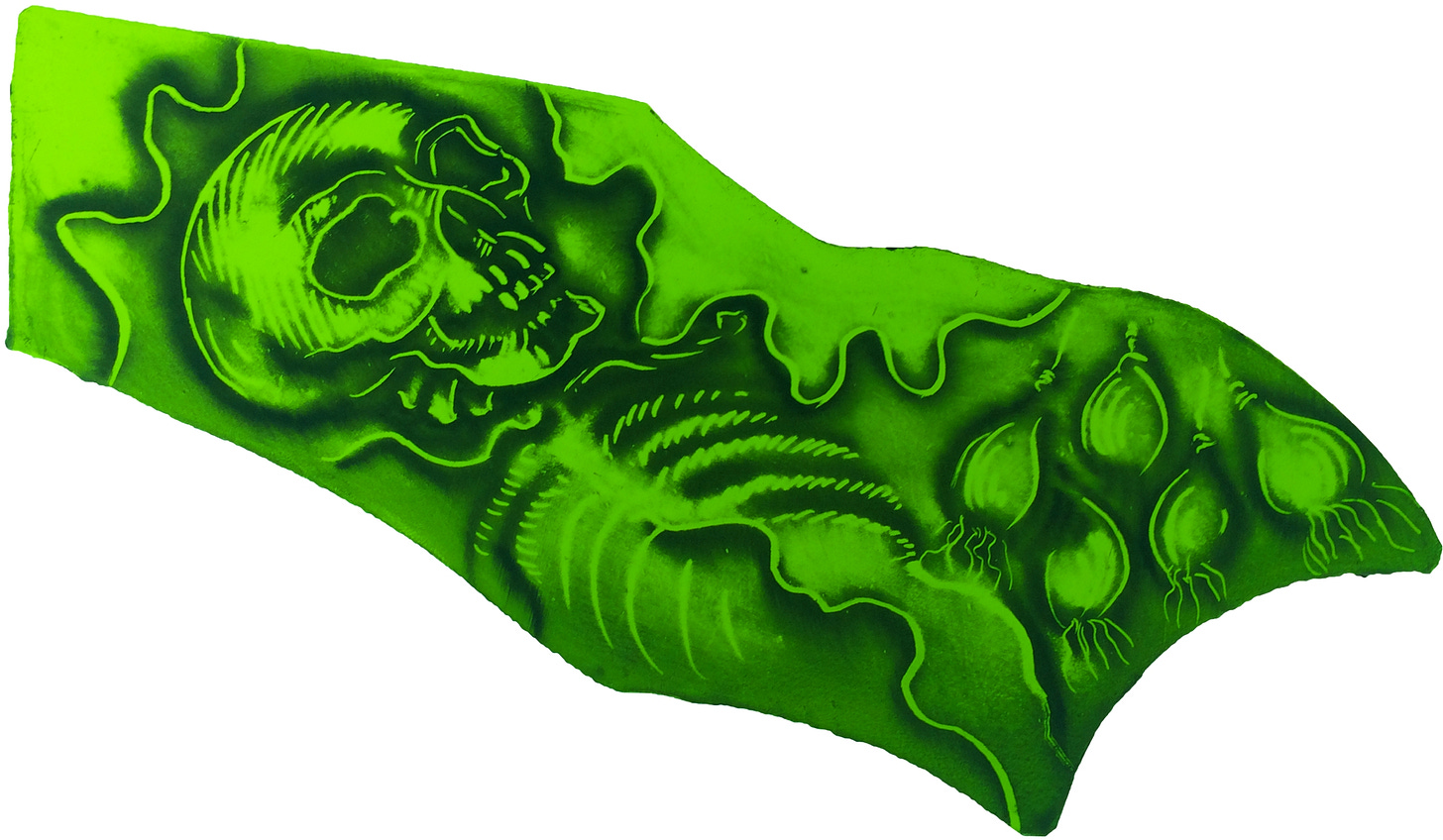
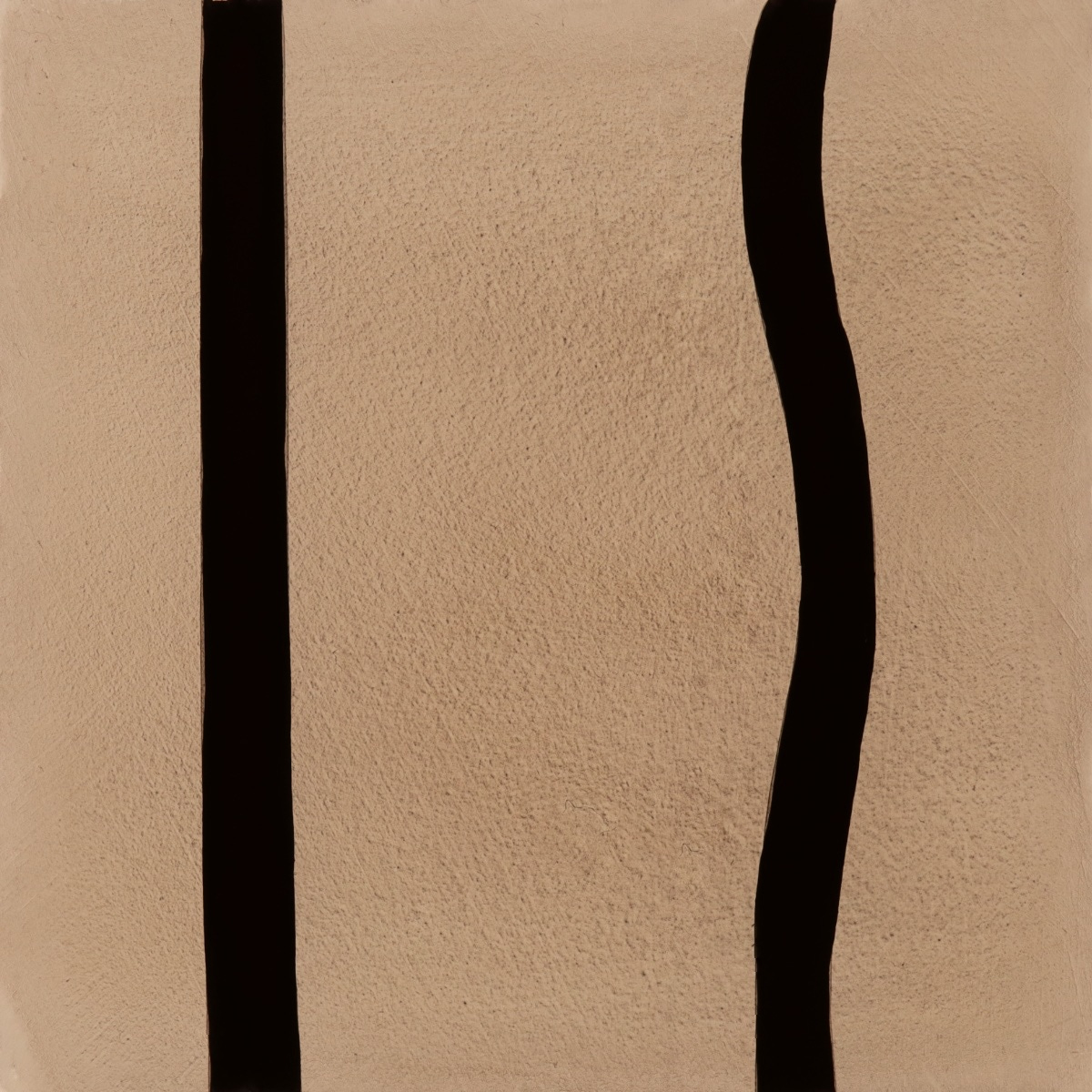
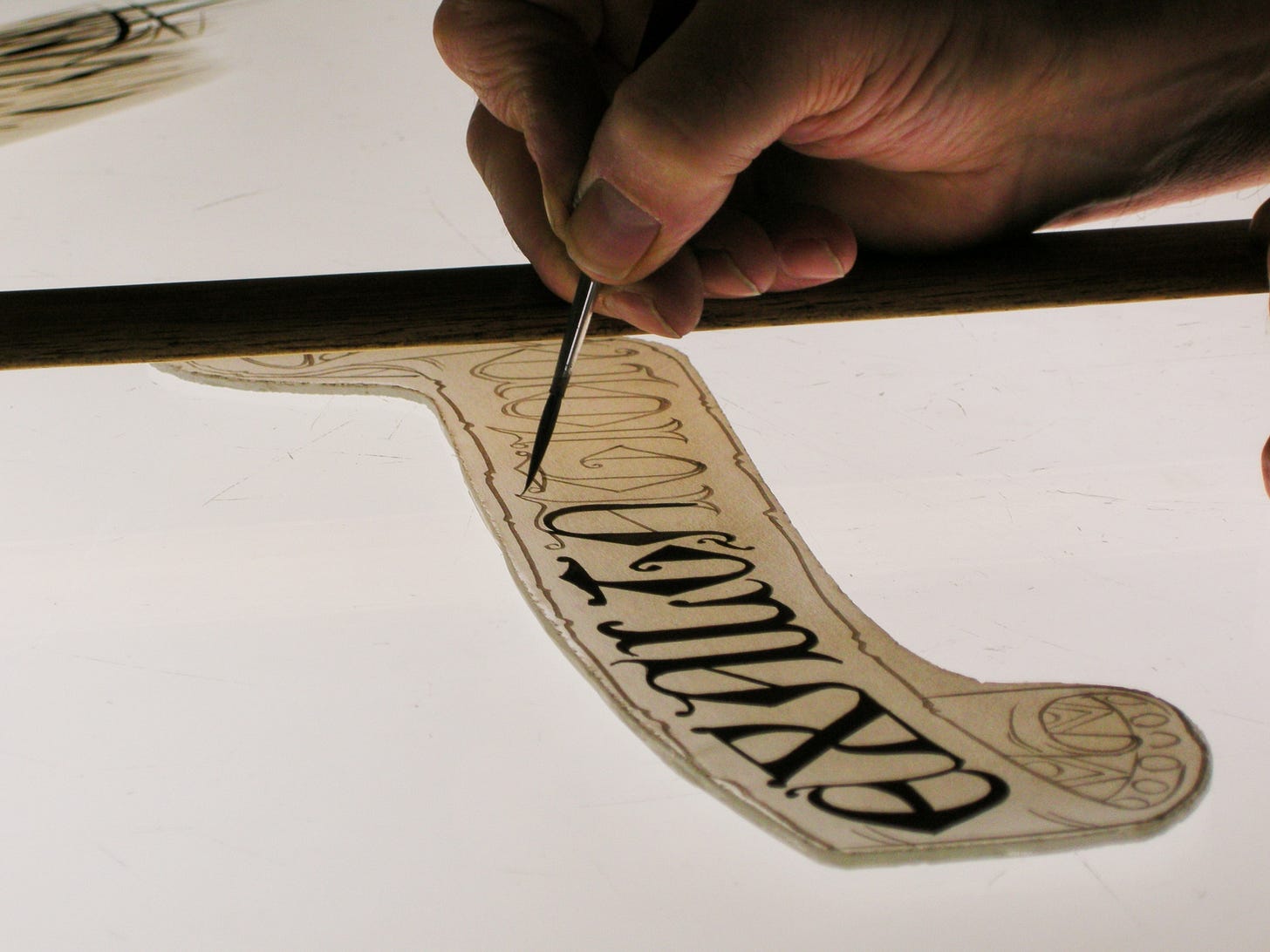
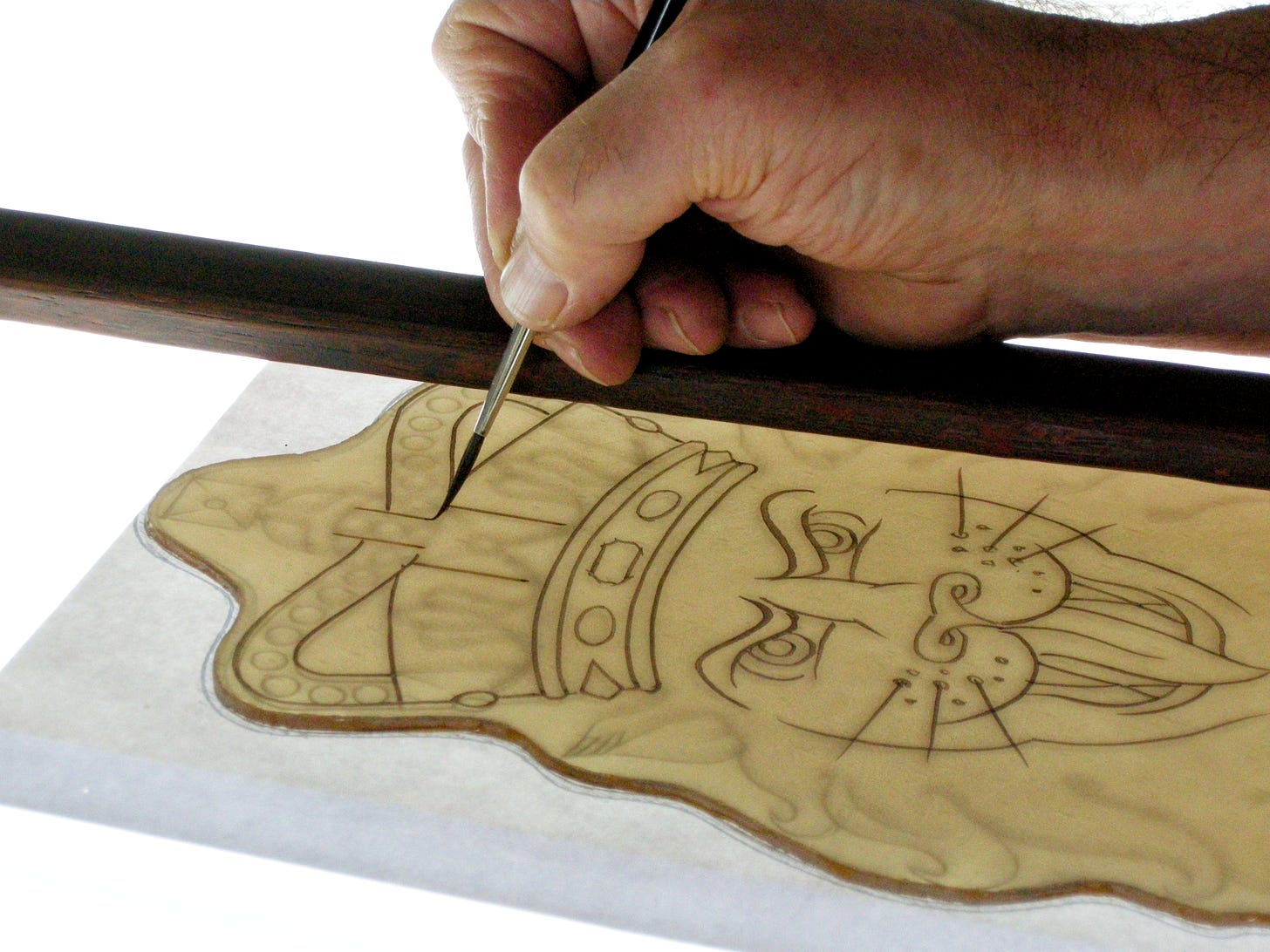
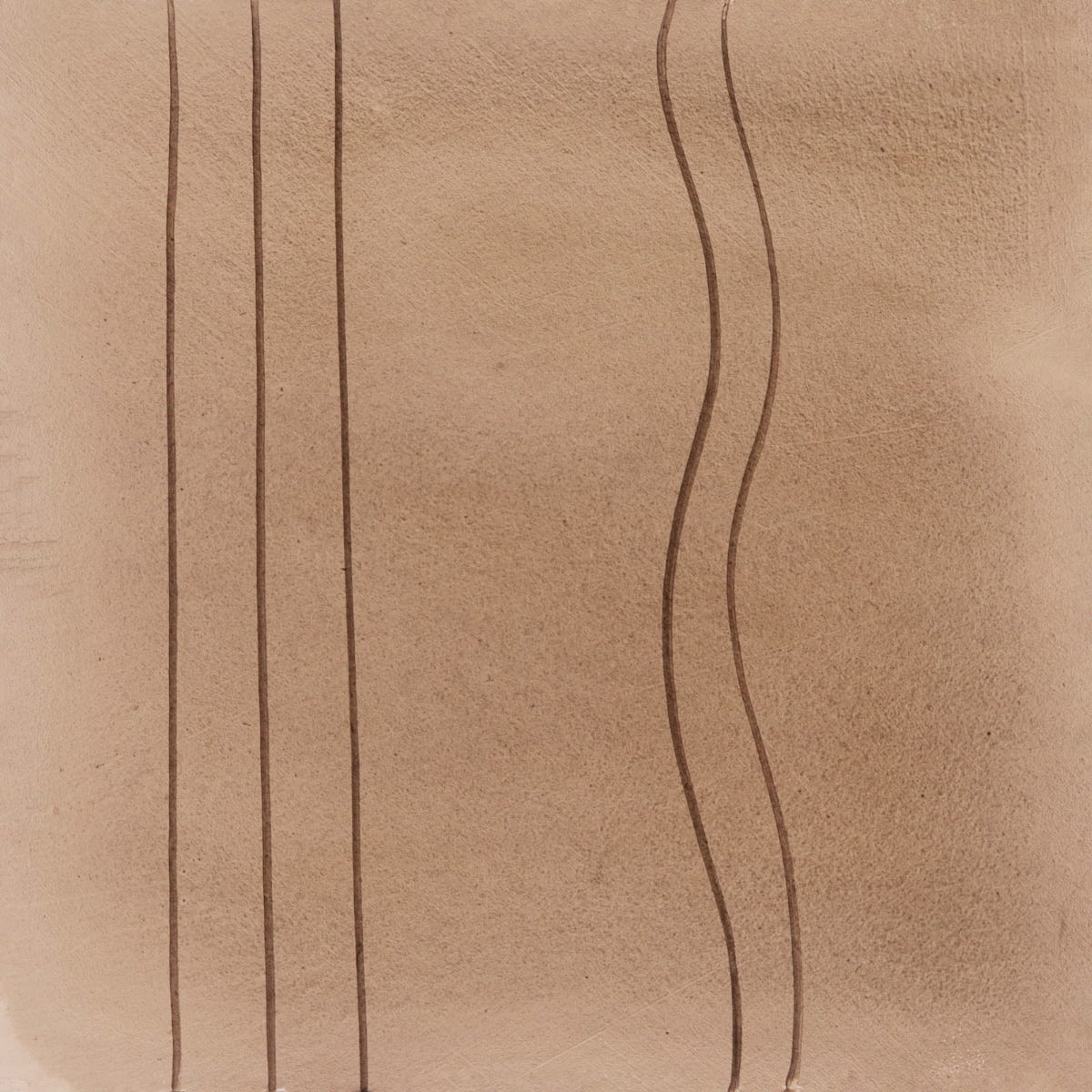
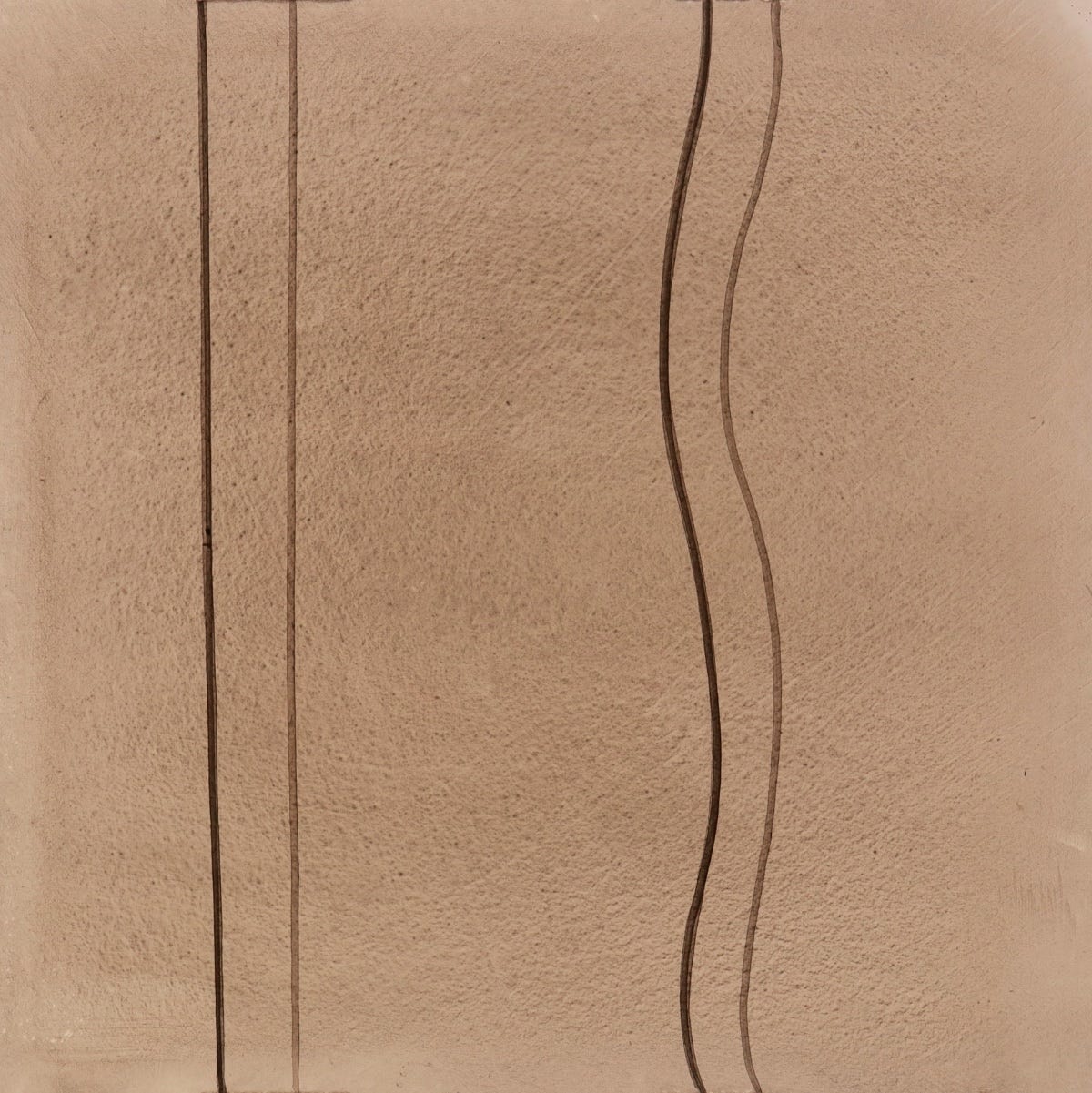
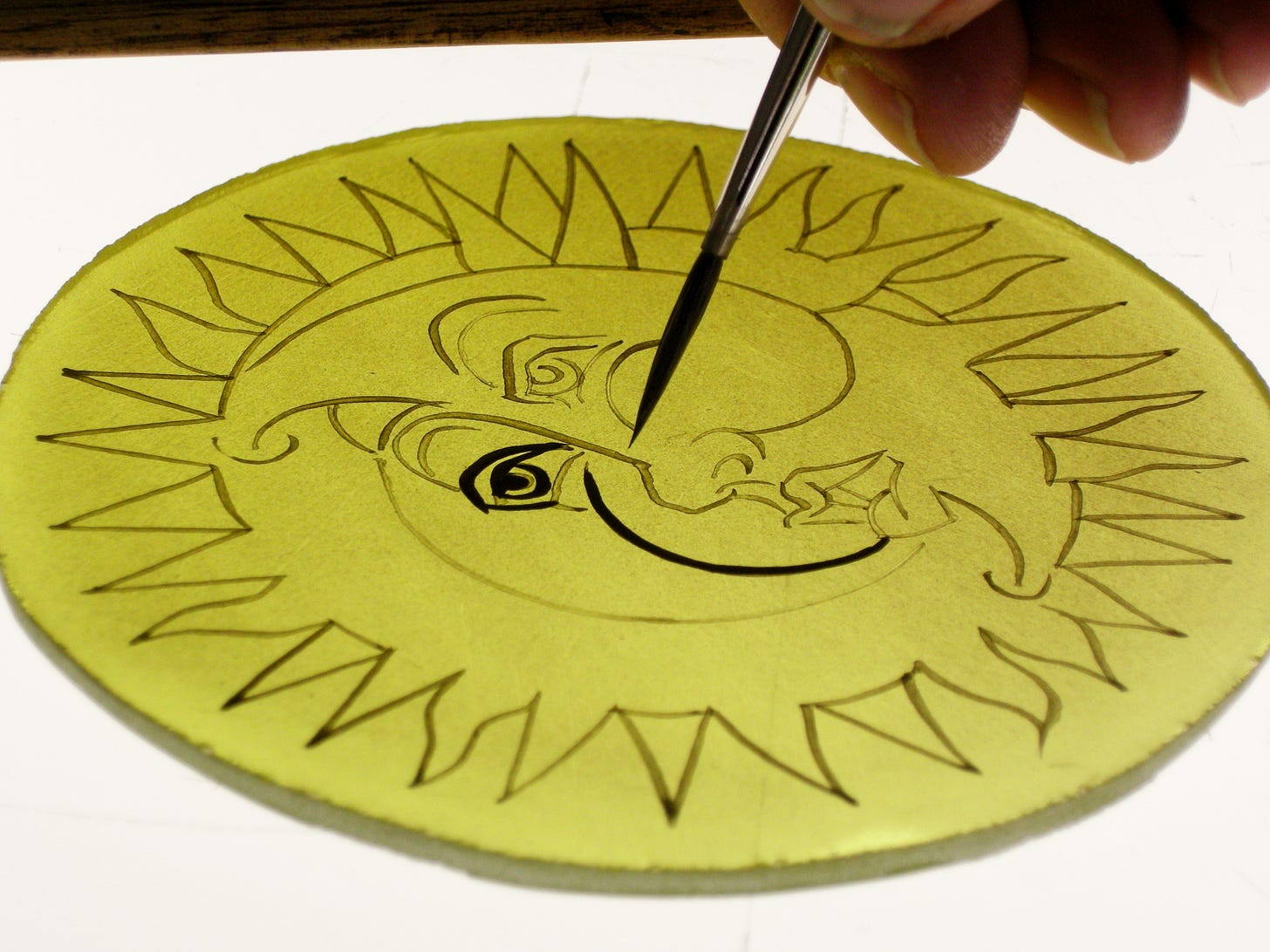
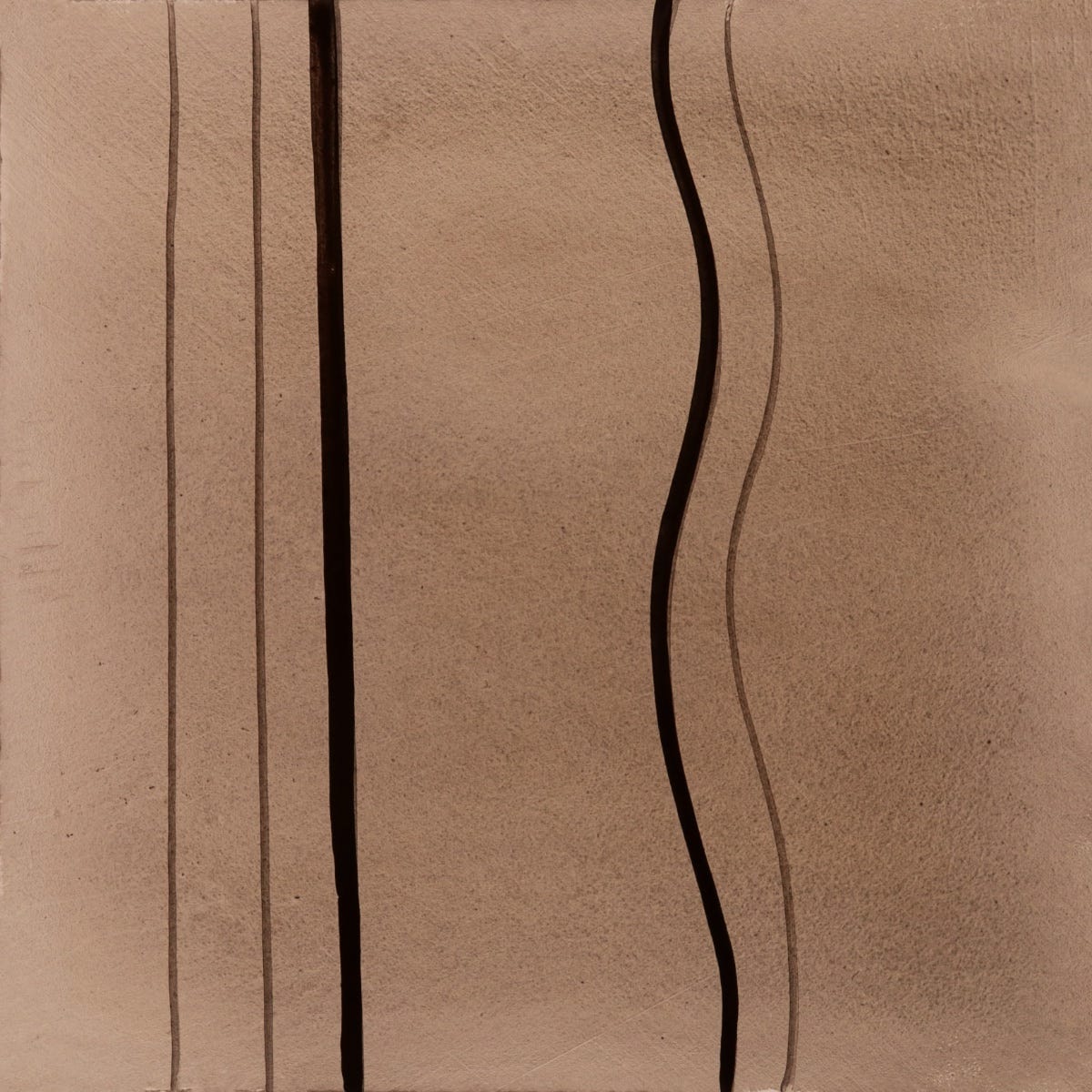
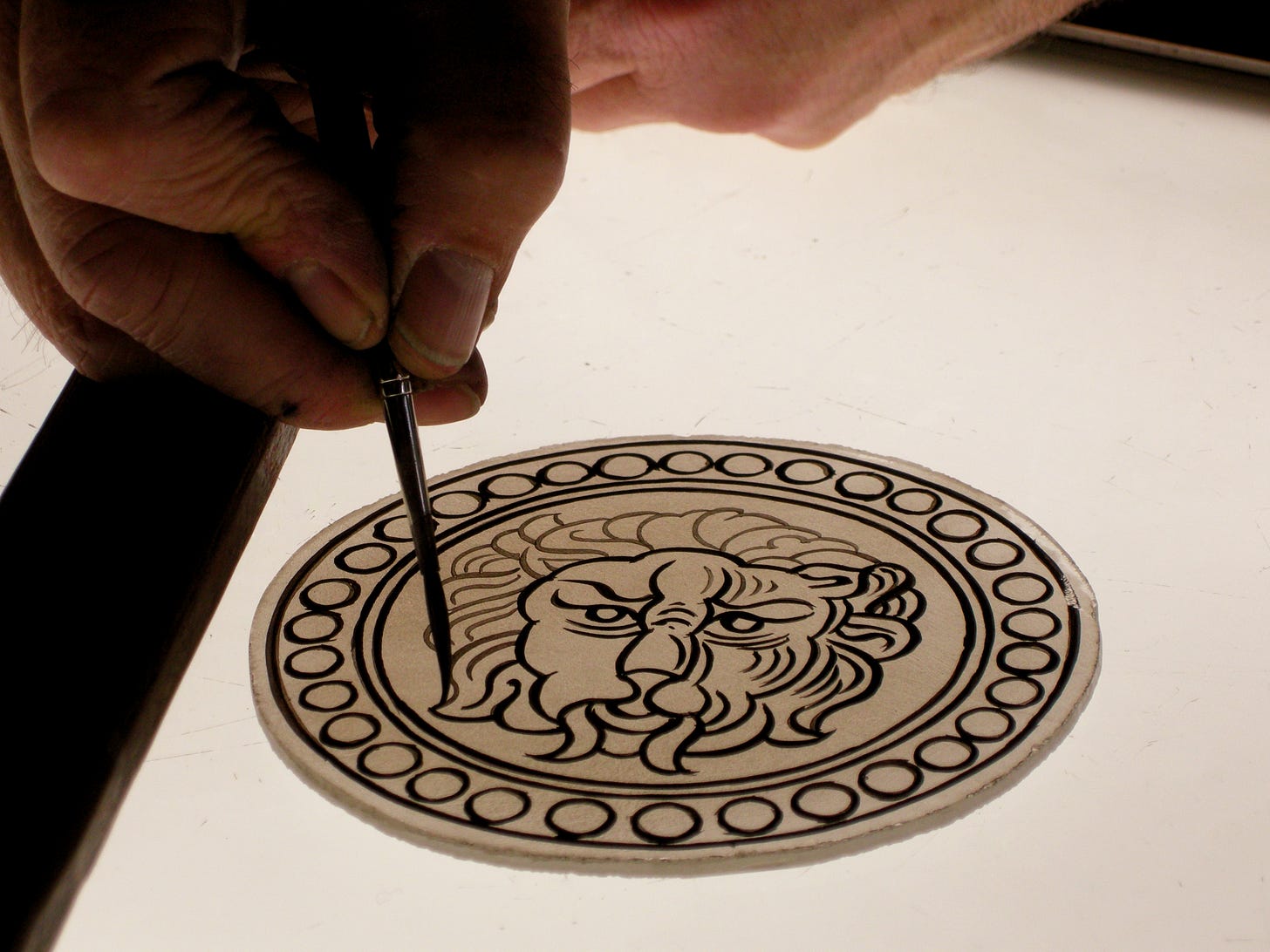

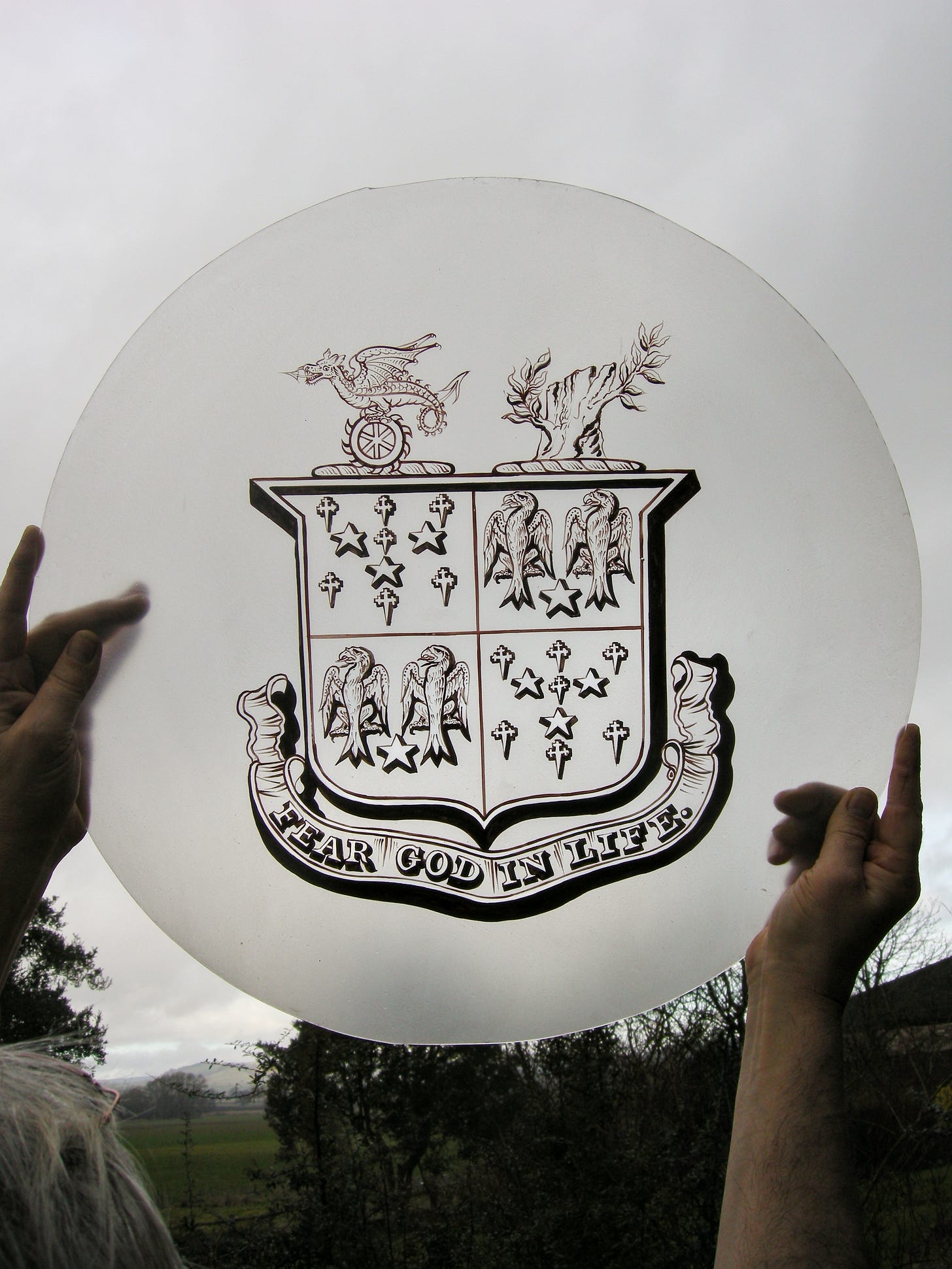
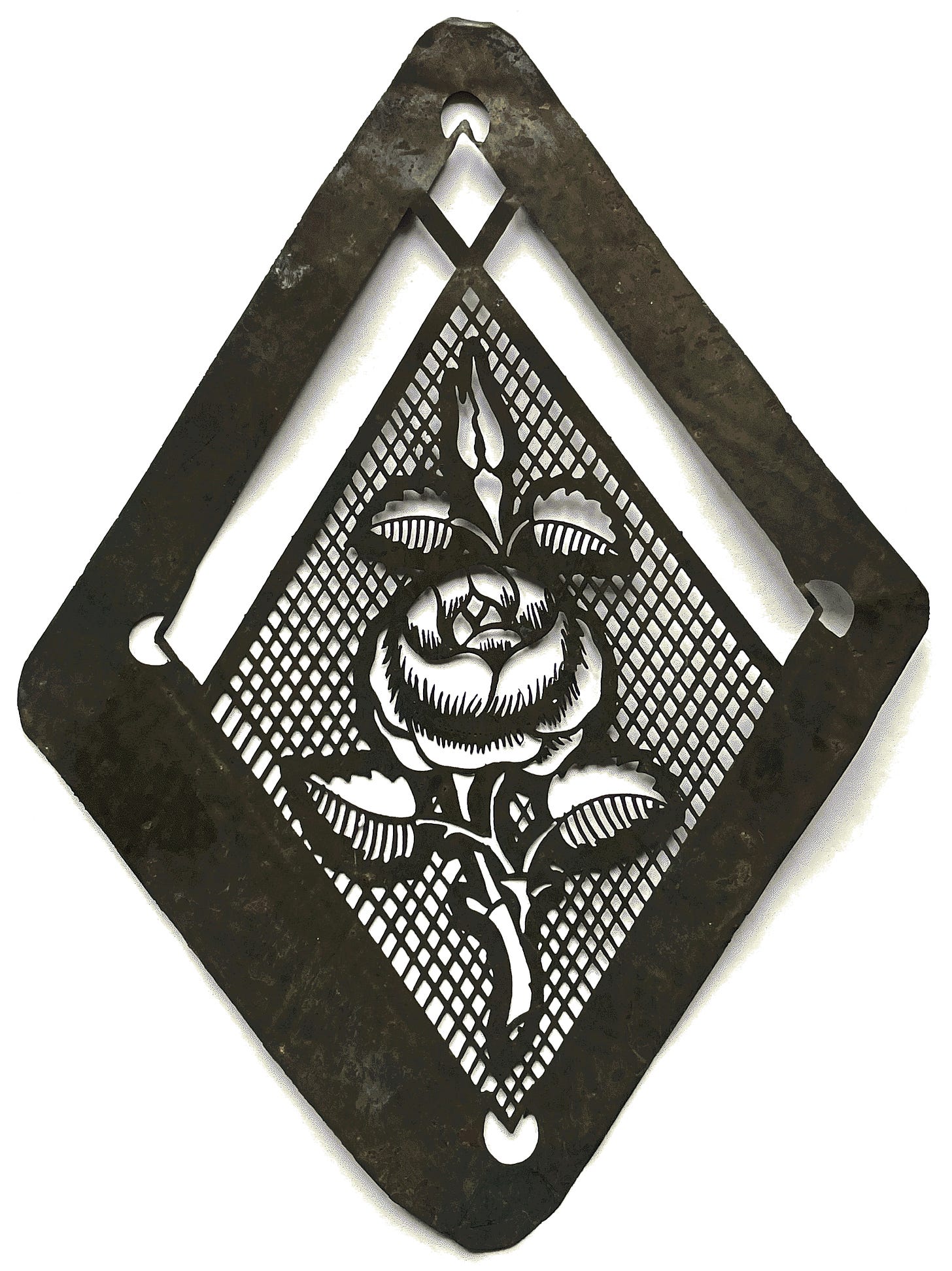
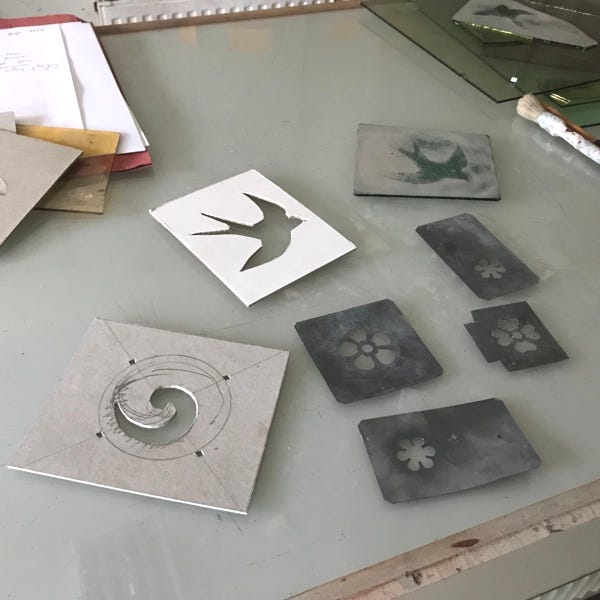
Painting through Darkness.
The eyes (and ears) of Texas are upon you (all).
Keep on keeping us on the right route to awesome painting on our glass.
David Kittrell